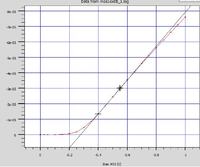shoofeer1
Newbie level 5
Hi all,
I am doing a project that needs me to design a PMOS transistor with a channel length of 65 nanometers using Silvaco TCAD tools. As you may know, there are examples provided in the software that I am using to customize in order to get the required channel length. So, I have to modify the silvaco Code to get what I want. But the problem is there is no much reference material and it is like shooting in the dark. Could any one help me and let me know which specific part of the code do I need to change? Please help and I will be forever grateful.
I am doing a project that needs me to design a PMOS transistor with a channel length of 65 nanometers using Silvaco TCAD tools. As you may know, there are examples provided in the software that I am using to customize in order to get the required channel length. So, I have to modify the silvaco Code to get what I want. But the problem is there is no much reference material and it is like shooting in the dark. Could any one help me and let me know which specific part of the code do I need to change? Please help and I will be forever grateful.
